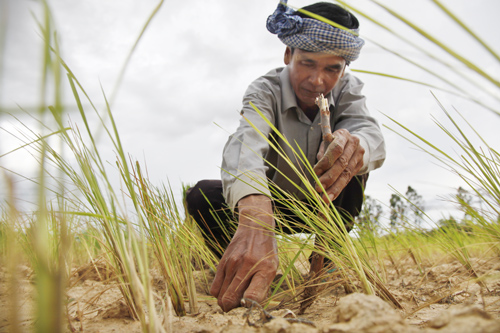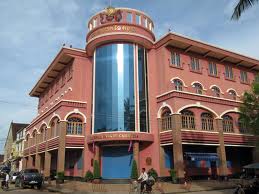Agriculture needs more loans, irrigation systems, experts say
Agriculture needs more loans, irrigation systems, experts say
Accessing low-interest loans for rice cultivation is a challenge because the industry in Cambodia is dependant upon rainfall and not irrigation and is thus more risky, experts said last week.

In a meeting on the private sector development in the rice sector, Lim Heng, vice president of the Cambodia Chamber of Commerce, suggested that the government should supply more irrigation systems for better rice output.
“If we do not have enough water systems and still depend on the rainfall, the risk can be very high,” Lim Heng told participants in the meeting. “Therefore financial institutions will be hesitant to give us loans as they think it is too risky.”
He added that if farmers had enough water, crop yields will be better, and the costs of production would be lower.
Irrigation systems in Cambodia are said to be on the rise, but experts in the sector said this is not reflected in day-to-day practices.
Lim Kean Hor, Cambodia’s Minister of Water Resources and Metrology, said in January that the irrigation systems cover a total area of 1.4 million hectares, about 63 per cent of the country’s cultivable areas.
However, Dr Yang Saing Koma, president of CEDAC, a local agricultural organisation, said that although irrigation systems in the country utilise a total of more than 2,000 canals, only about 10 per cent can be used practically.
“Most canals can be used only within a short period or when the water begins to recede,” he told the Post yesterday. “The amount of canal water used regularly over the course of a year is very little.”
Experts have long said that the shortage of loan activity in Cambodian agriculture hinders the sector’s development.
Even if loans in the agricultural sector are rising among major financial institutions, experts say it does not answer the real demand in the market.
Acleda Bank, Cambodia’s largest domestically owned bank, has given $254 million in agricultural loans, representing about 19 per cent of total lending.
Research over the past two years conducted by Srey Chanthy, an independent agricultural analyst, shows that at least $1 billion per year is needed by farmers to strengthen production.
“The supply of loans to the agriculture sector is still small, compared with the large demand in the market,” Srey Chanthy said.
phnompenh post

















